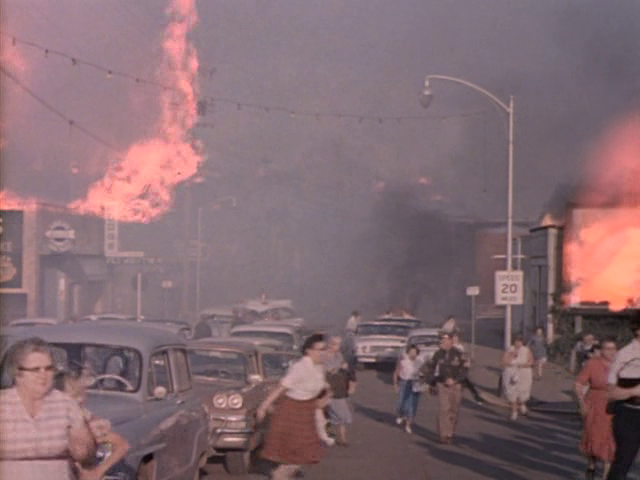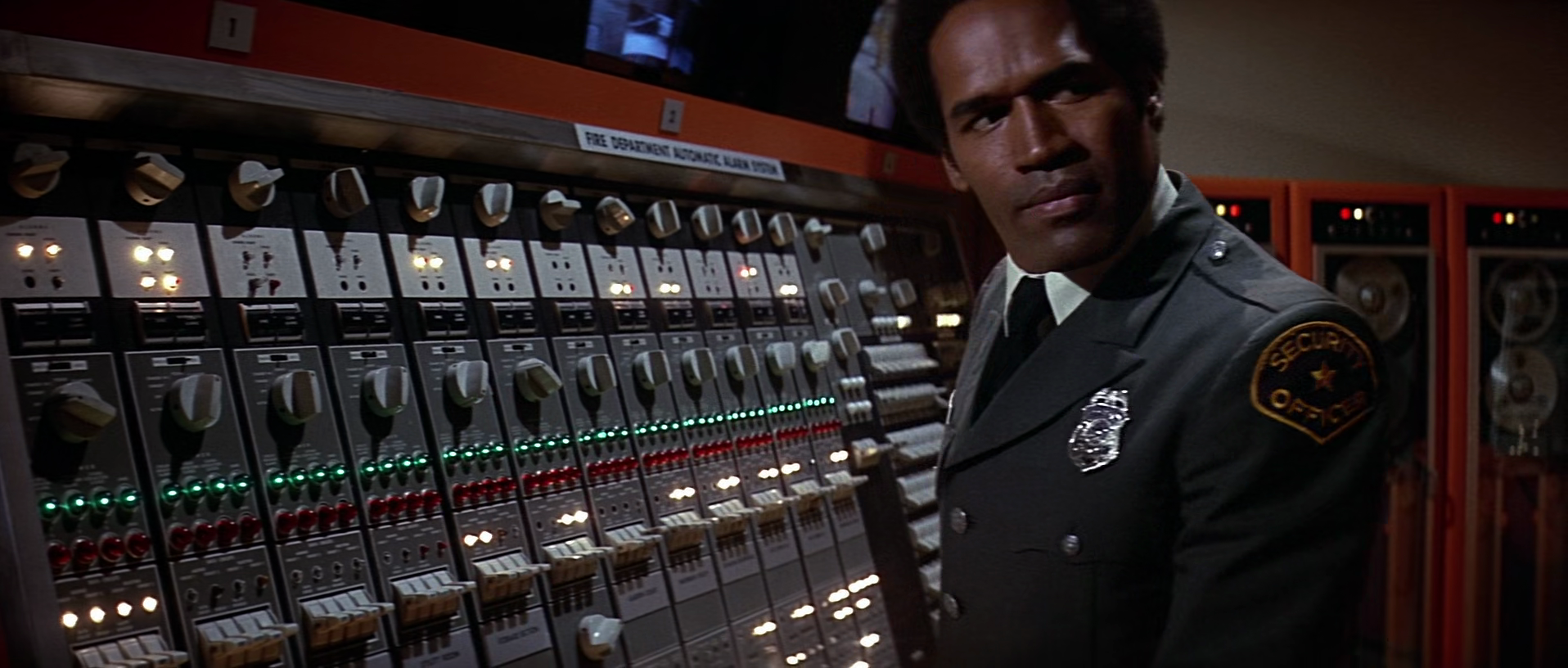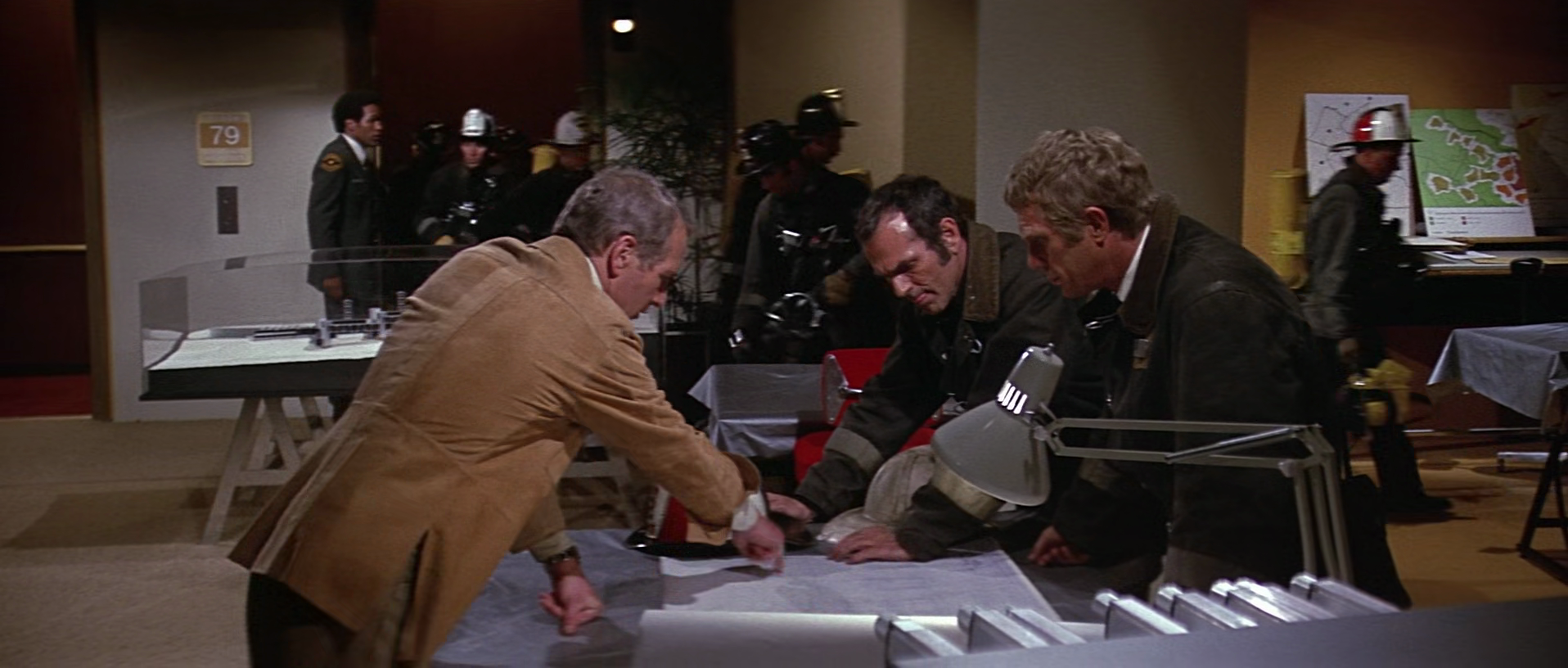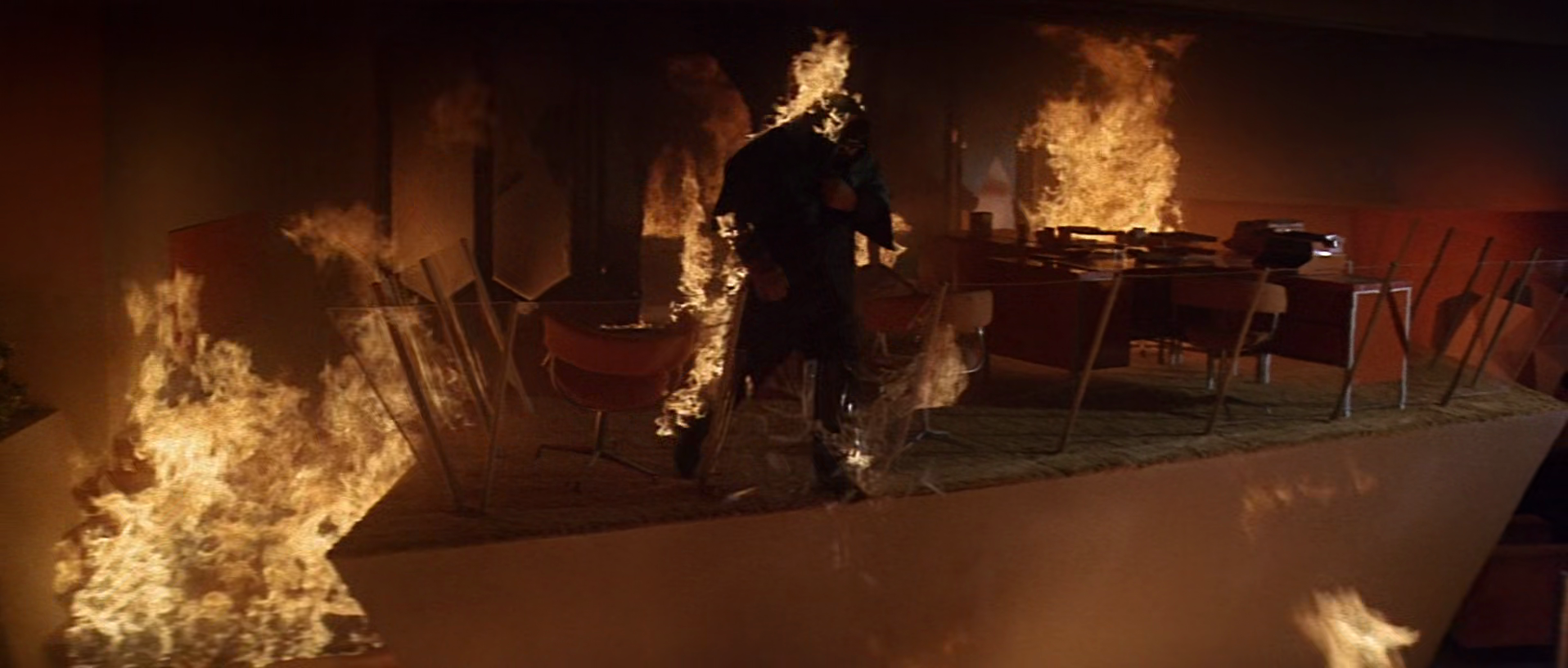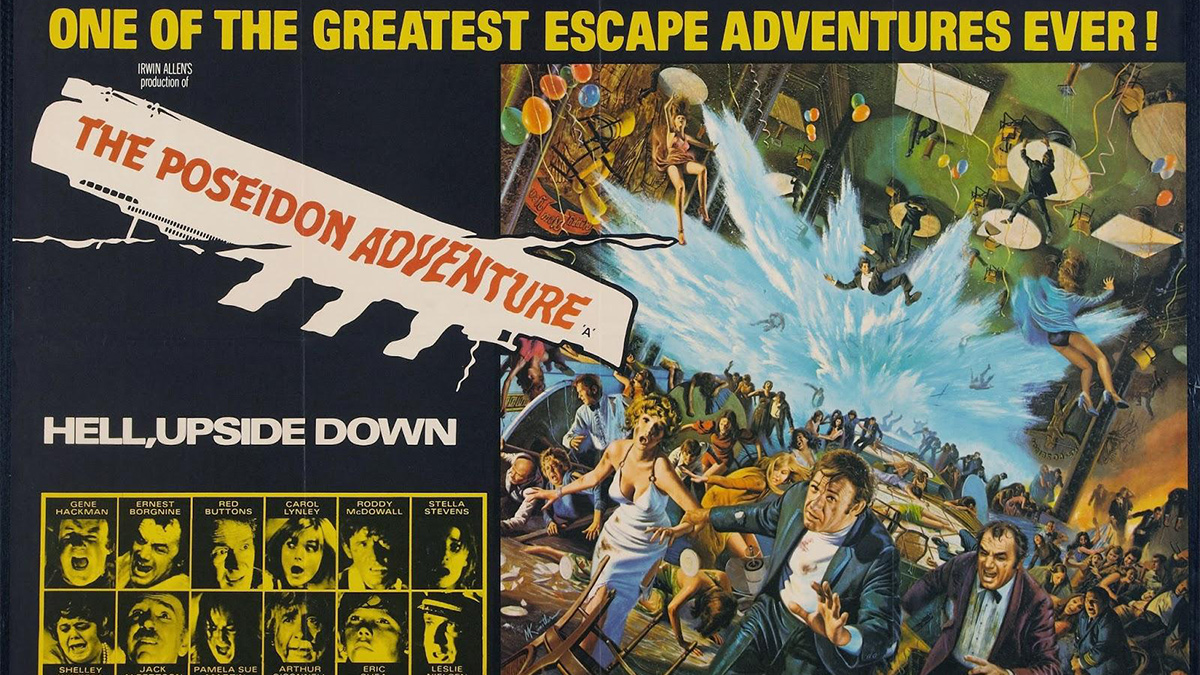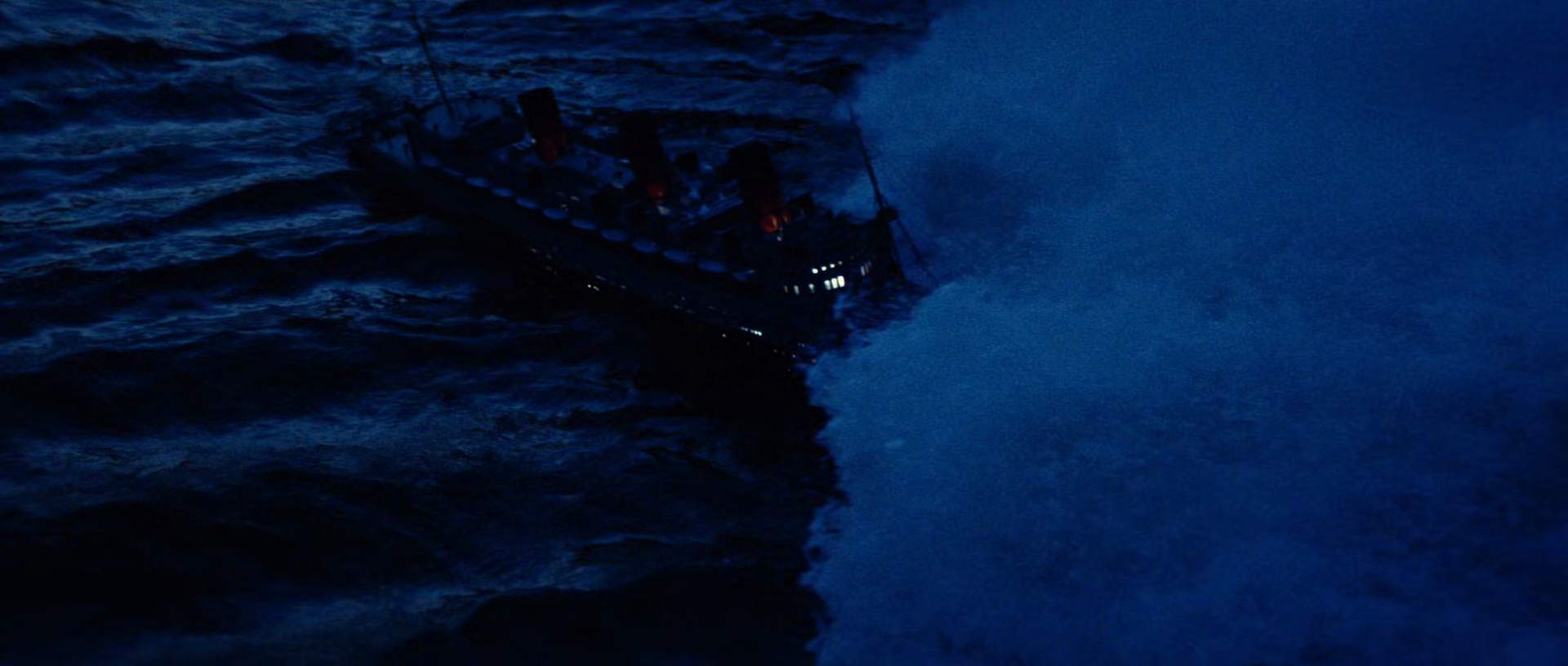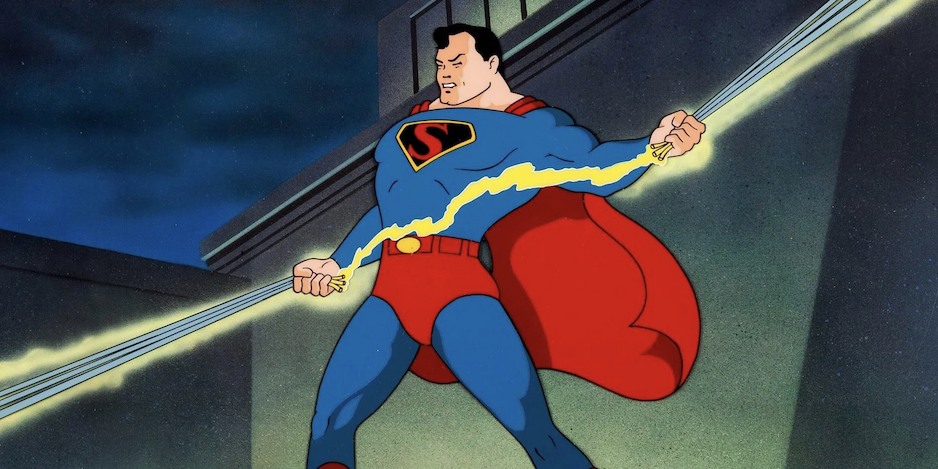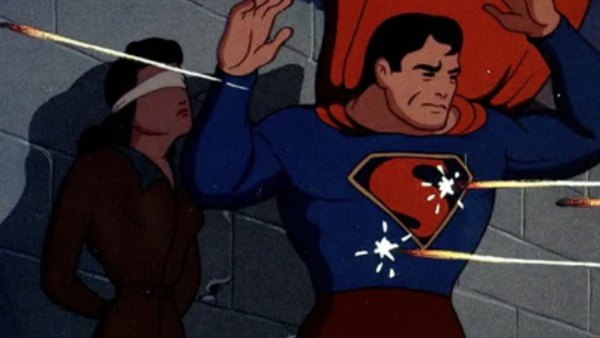By 1977 Irwin Allen had already secured the moniker of “Master of Disaster” as his big screen epics The Poseidon Adventure and The Towering Inferno had become huge hits, but this didn’t make Mister Allen abandon his television roots so he took his love of mass destruction to the small screen in the form of two made-for-television movies, the first was Flood! in 1976 and then the one we will be looking at today; ready, aim, Fire!
The plot is a fairly paint-by-numbers offering, a convict named Larry Durant (Neville Brand) starts a forest fire so that he and his fellow prisoner, Frank (Erik Estrada), can escape from an Oregon road gang, which puts the residents of a mall mountain community in peril as the fire quickly rages out of control. This is the kind of story that producer Irwin Allen could knock out in his sleep, unfortunately, much of the movie had me nodding off because screenwriters Norman Katkov and Arthur Weiss failed to deliver much in the way of compelling characters or interesting plot lines, certainly not enough to keep even a disaster movie fan interested. As is the case with pretty much all disaster movies, this one will simply be chock full of soap opera levels of drama, which is often required in such instances when the filmmakers need padding to ensure a feature-length outing. First, we have Sam Brisbane (Ernest Borgnine) who runs the local lumber mill and he's a man who has spent the last four years trying to get widow Martha Wagner (Vera Miles), owner of a forest lodge, to marry him before they’re too old to have any fun.
“I picked the wrong day to sign on with Irwin Allen.”
Next, we have Doctors Alex (Alex Cord) and Peggy Wilson (Patty Duke) whose shaky marriage will be healed when battling the blaze as it will bring out their better natures because if I learned anything from watching these types of movies it's that disasters are great at marriage counselling and fixing relationships. Of course, that's not enough drama so we also have ole Doc Bennett (Lloyd Nolan) crashing his car to avoid a bear, which had wandered into the road, and I’m left wondering “Could that have been Smokey the Bear?” Then there is helicopter pilot Bill Clay (James W. Gavin) who is excited about getting a new job that will finally get him out of this one-horse town, sadly, in this kind of movie that’s almost as deadly being three days away from retirement.
That he survived this shocked the hell out of me.
While Fire! boasts an impressive cast it ultimately falls short in its execution as the characters lack any sort of depth and are often reduced to the kind of caricatures you would expect to find on an episode of General Hospital. The script is completely riddled with cliches and predictable plot twists that tend to plague the disaster movie genre, and as the special effects, they aren’t all that special. Even for a made-for-television movie the practical effects are rather lame and do little to save the film from its lacklustre storytelling. The one thing that Irwin Allen really burns through is stock footage because I’d say that a good eighty percent of the fire we see in this outing is stuff borrowed footage from actual forest fires.
I’m not sure where this footage is from but it sure does look exciting.
Stray Observations:
• The fire goes from a few smouldering twigs to a raging inferno without much warning, and no one spots this happening, despite the fire being only a couple of yards away from the road gang.
• Durant purposely started the fire with the intention of being part of the volunteer fire brigade, so that he could then fake his death and escape, but there are so many unpredictable elements to his plan it’s a miracle it worked as well as it did.
• Erica Estrada plays a Native American prisoner despite the fact that he’s of Puerto Rican descent, which to be fair, isn’t all that unusual for Hollywood.
• Dr. Peggy Wilson seems quite surprised that a boy who once had polio now appears to be perfectly healthy, but as a physician, she would have been quite aware that only about one percent of polio cases result in paralysis. Maybe she should get a divorce from her profession as well.
• The teacher who loses one of her charges when the fire breaks out practically goes catatonic and I’m certainly glad that this town hires such competent and stable people to take care of their children.
• Due to the crashed helicopter it’s up to Sam to rescue the people trapped at Wagner Lodge, why the kids are still there and not at home with their parents remains a mystery to me.
It does lead to a fairly thrilling rescue and this movie really needed that.
Despite its flaws, which it has many, Fire! does offer a few moments of excitement and tension, particularly in the action sequences involving the firefighters battling the flames - even if it is mostly stock footage - however, those moments are few and far between and are not enough to salvage a film that is nothing more than a collection of this aforementioned stock footage wrapped in over-the-top melodrama and consisting of a group of characters that don’t have enough chemistry to spark a lighter let alone a forest fire.
Disaster Pedigree:
- Ernest Borgnine sailed aboard The Poseidon Adventure.
- Llyod Nolan was in Airport and Earthquake.
- Erik Estrada was in Airport 1975.
- Patty Duke fended off killer bees in The Swarm.
- Alex Cord travelled down to the sunken wreck of Goliath Awaits.



